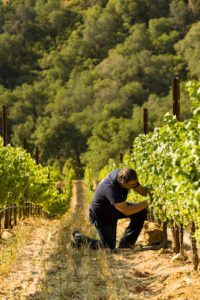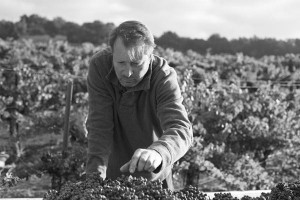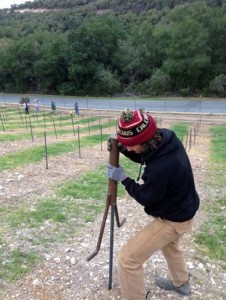Paso Robles’ Cabs are earning more accolades than ever, demand is spiking and wineries are planting more Bordeaux varieties than ever before.
Not only is recognition among critics and sommeliers increasing across the board for members of the Paso Robles CAB Collective, Paso’s producers are planting more Cabernet Sauvignon than before too, ensuring the region continues to position itself alongside the world’s top Bordeaux varietal regions.
More than 55 percent of Paso’s 41,000 acres of vineyards are made up of Cabernet Sauvignon and other Bordeaux varieties.
In 2015 and 2016, roughly 3,000 new acres of vineyards were planted in Paso, of those, an estimated 50 percent were Cabernet Sauvignon, according to California Grape Field Representative Andrew Jones of Sunridge Nurseries.
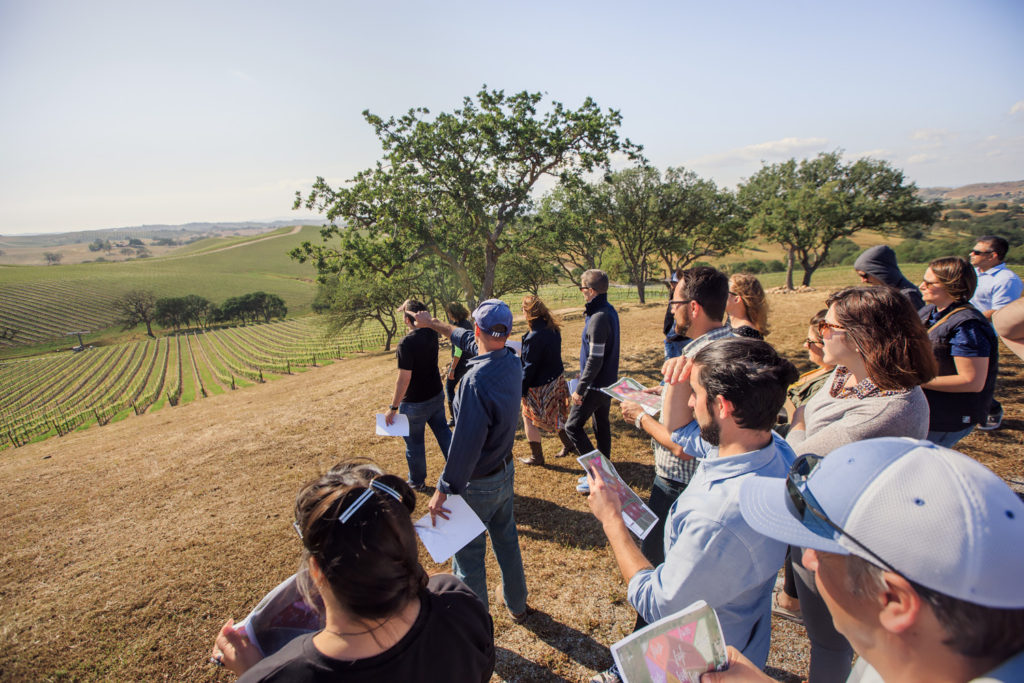
Members of the CABs of Distinction SOMM Camp overlooking San Antonio Winery’s vineyards in the El Pomar District.
The key to Paso’s success is the devotion of CAB Collective members who strive to craft true terroir-driven wines. While Paso enjoys mountainous slopes and an ideal grape growing climate—hot and dry days, and a cooling maritime fog that rolls in from the Pacific Ocean—it boasts incredibly diverse soils. No two Paso Robles vineyards are the same—a single vineyard block may contain several different soil types. The results—and what continues to win over critics and enthusiasts alike—are wines that are complex, approachable and age-worthy.
“Bordeaux varieties are the future of Paso Robles,” says Winemaker Ben Mayo, who recently joined CAB Collective member San Antonio Winery to help grow the winery’s investment and reach of its high-quality Cabernet Sauvignon program.
Not only are more Cabernet Sauvignon and red Bordeaux varietal vines going in, but vintners are putting the utmost energy and focus on what clones they introduce into their vineyards.
DAOU Vineyards & Winery’s Winemaker, Daniel Daou, for example, is experimenting with 13 different Cabernet Sauvignon clones in order to discover the full potential of the terroir on his 2,200-foot elevation property. “These clones are very qualitative clones that are low yielding and will produce blue and black fruit with a tannin structure reminiscent of a classic Bordeaux wine,” said Daou.
At the 40-acre Brecon Estate, custodians of likely the oldest major Cabernet planting in the Adelaida District, new plantings include the second only California planting of Malbec Clone 19FPS – an exciting clonal selection just imported from Cahors. The vines are of particularly low vigor and the fruit of very high quality. Combined with existing hill top Cabernet Franc and a new complementary planting of Petit Verdot, the whole Brecon Estate is now planted to Bordeaux varietals.
Ask any member of the CAB Collective what clones they are planting and you will hear many different answers as each are developing the best program for their vineyards. Calcareous Vineyard, for example, is utilizing what is known as a “field blend” in their recent plantings.
“As we expand our Bordeaux plantings here at Calcareous, we’ve accepted the fact that there are more unknowns than knowns regarding how to best express our vineyard with these varietals. One idea we attempted was to blend several clones into the same block. Talking with other members of the CAB Collective, everyone has their favorite clone. I decided to plant a mixture of clones 191, 337, and 412. By planting a field blend of multiple clones, we turn over a bit of control to the vineyard itself and provide the opportunity for something unique and unexpected to arise,” explained Calcareous Winemaker, Jason Joyce.
As the vine row count grows, coupled with the region’s cutting-edge innovations in the vineyards, Paso Robles Cabernet Sauvignon will continue gaining prominence in the wine world.
